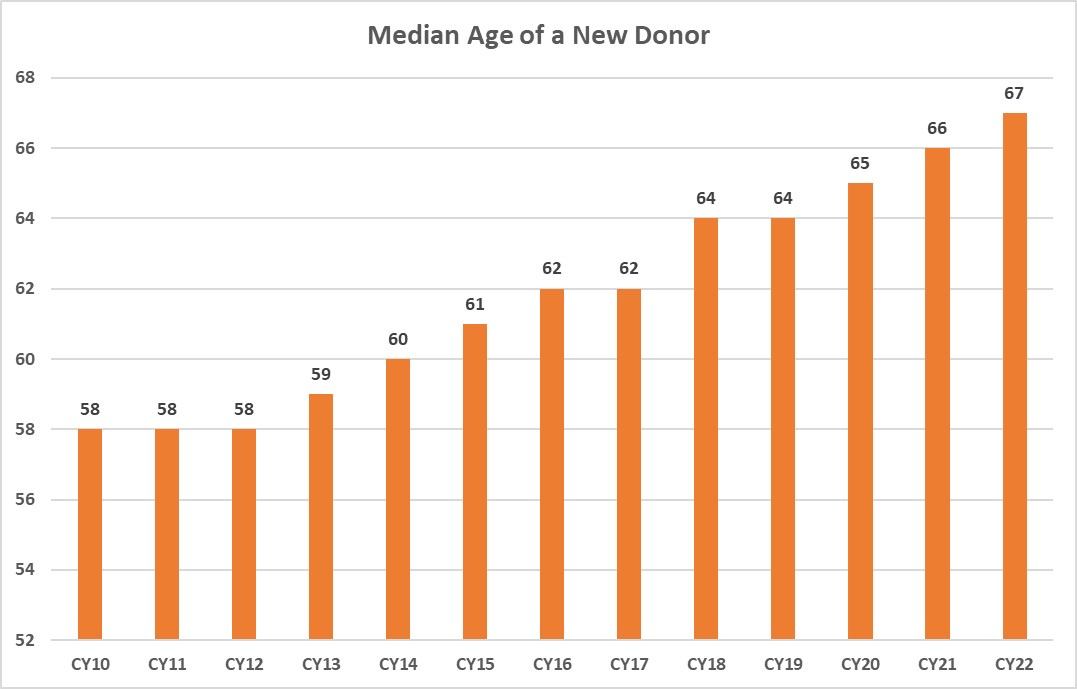Over the last dozen years, we’ve tracked the average age of a new donor for faith-based organizations.

For the first three years, from CY10 to CY12, the age of a new donor was steady at 58. However, since then, the median age of a first-time donor acquired has steadily risen to 67 years for those acquired last fall.
Is this a concern?
Yes and no.
First, the concerns: The graph suggests that for the past 10 years faith-based organizations have, on average, been acquiring the same age cohort (those born around 1955). If this trend continues, it won’t be too many years before the median age of a new donor is 70 years.
Second, while faith-based organizations have really improved their digital acquisition efforts over the past decade, this has not stymied the increase in the age of the new donors. What this likely means is that older donors are more comfortable giving online.
Now why I am less concerned about the age increase of new donors: In the United States, a 70-year-old person has a life expectancy of 15-17 years, depending on their gender. That’s still a long time to cultivate a donor. Really, the donor is much more likely to lapse into inactivity than to pass away (what we refer to as “eternally lapsing” in the biz.)
In addition, while the age of the new donor has increased, so has the average gift size of a new donor. That means nonprofit organizations are realizing more of the donors’ LTV at the point of acquisition. That means the donor will be covering their cost of acquisition sooner and providing net revenue to the organization faster.
When I started in this business (as a young man) there were concerning conversations about the average age of the donors on a faith-based database. A generation later, we are still having those same conversations – yet during all that time faith-based organizations have continued to acquire and cultivate donors. I suspect they will continue to do the same during the next decade.
But this does lead me to ask, what is the average age of your new donors?

